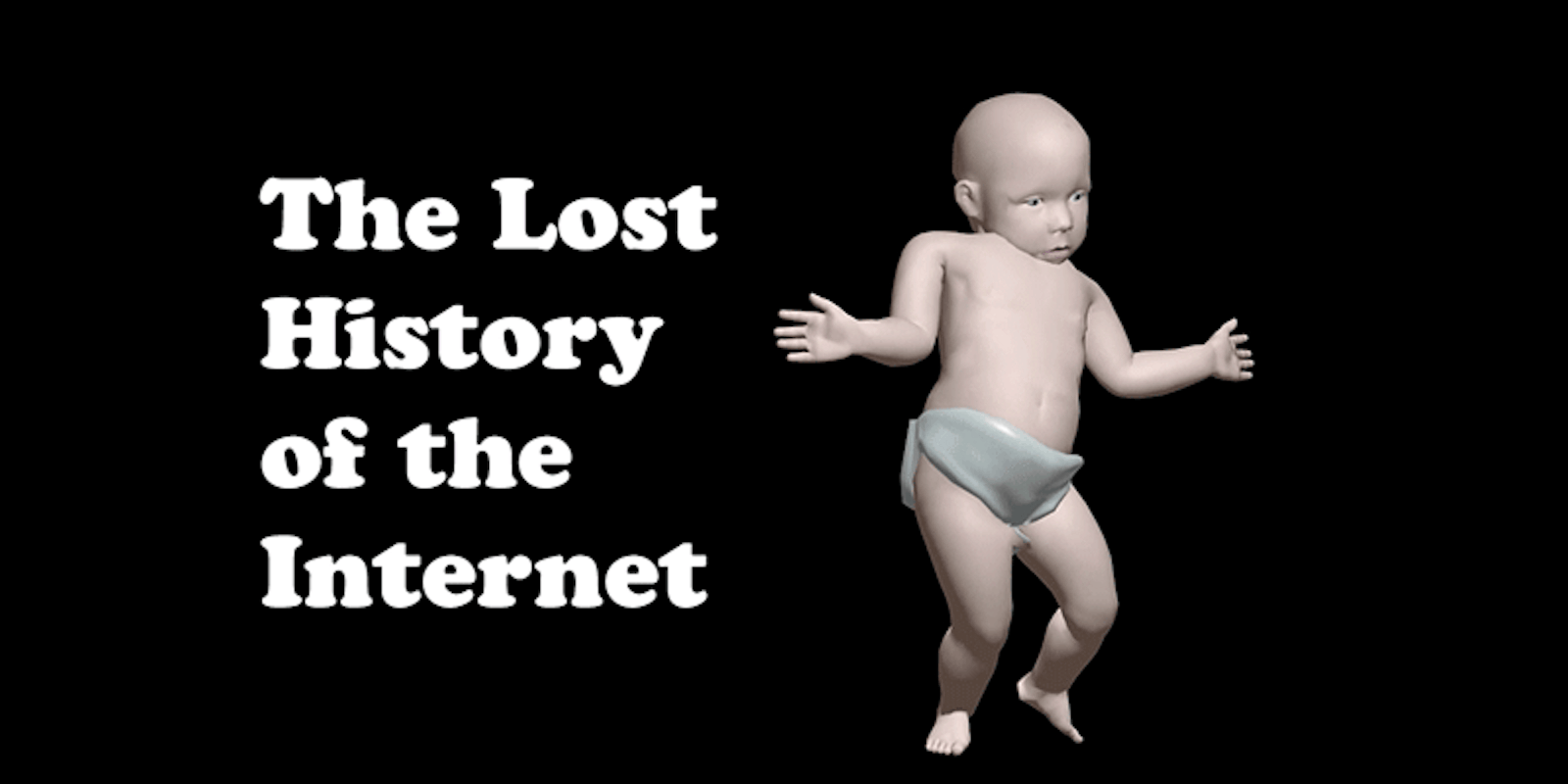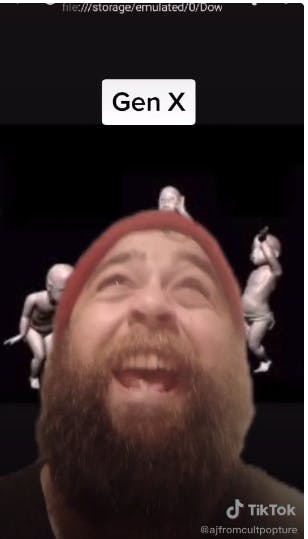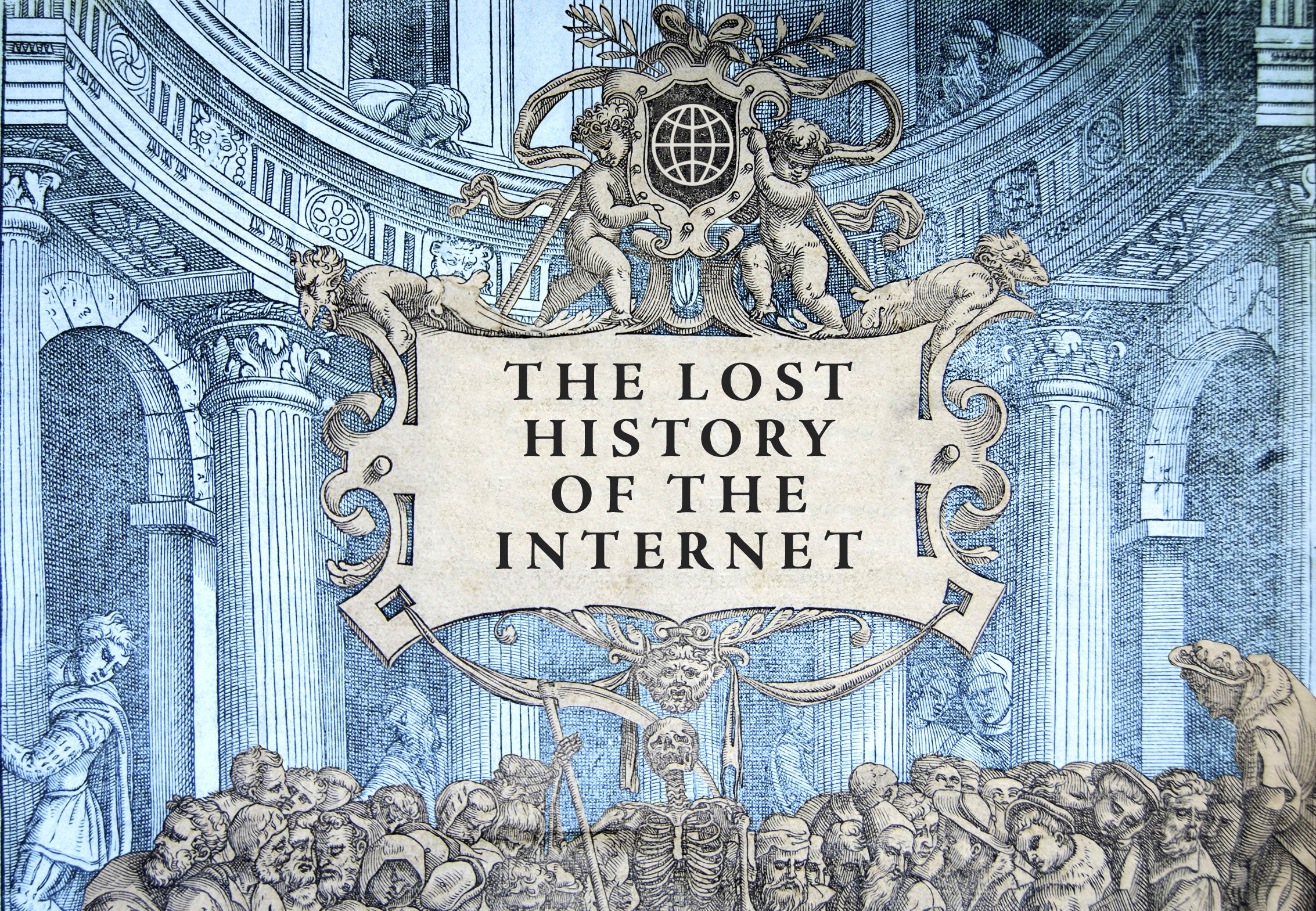“It was the most banal, meaningless, nothing of a thing,” Rob Sheridan says of the meme he helped birth.
“I still don’t really know what exactly you were saying about yourself when you were wearing a T-shirt that says ‘Ooga-Chaka on it.”
He’s had some time to think about it. In January 2018, Sheridan shared a detailed “confession”: He was responsible for unleashing the Dancing Baby—that twirling, pale vestige of late ’90s culture—on the internet. A software company created the baby, but Sheridan turned it into a meme after he made a dedicated site where “people could go and find all the new versions of the baby,” as he said in a TV interview in 1998. Dancing Baby is now considered one of the earliest internet memes. But Sheridan also believes it was the first meme to “break out in offline pop culture,” as evidenced by the aforementioned Dancing Baby T-shirt.
This is a story about how the Dancing Baby meme was created, and how it still lives online today.

The birth of Dancing Baby
The word meme wasn’t ubiquitous when Sheridan came across Dancing Baby, then a file called babycha2.avi, in 1997. He was a “shy, nerdy” teenager living outside of Seattle, learning to build web pages.
“It was one of those things I never really thought about in context,” Sheridan, 42, says. He’s now a designer and artist, and he served as Nine Inch Nails’ art director for 15 years. But as meme history and culture expanded and a new generation referenced and created them, he’s contextualized his place in it.
Depending on your age and level of onlineness, what you consider the first meme will vary. The Dancing Baby is pretty widely considered to be the first meme, though All Your Base Are Belong to Us, an image from 1991 video game Zero Wing, started circulating as a GIF on game forums in 1998. Sheridan remembers early internet “destination jokes” like the Hamster Dance and short videos that were shared by the (then) extremely online. But they stayed online.
I have no real memory of the Dancing Baby, at least as an early internet explorer. Rotten.com is the only late 1990s website seared into my brain. But it’s not a meme as we know it now, based on an existing photo or featuring a real person. It was, perhaps, meant to be birthed and then quickly snuffed out.
The baby originated with animator Michael Girard and his team at Unreal Pictures, which included Robert Lurye and John Chadwick. It was part of a demo for a “footstep-driven” 3D animation software program, which allowed users to apply motion to select models—including a baby.
According to Chadwick, the Dancing Baby was essentially him “taking the Viewpoint digitized baby doll model,” using an “enveloping software” called Physique to “rig the baby for animation, and then loading Robert Lurye’s cha-cha animation to the baby.” Chadwick adds that making the baby dance was his idea.
Unreal Pictures licensed the program as Character Studio, a plug-in for 3D Studio Max, owned then by San Francisco company Kinetix. Girard, who’s worked on Rugrats and The Simpsons, says the Dancing Baby is “one of the first animations to incorporate physically-based gravitational dynamics during the airborne jumps when both feet are off the ground.”
“My dream at the time was to create a dance step-based animation/choreography system,” he says. “However, it turned out that most animators preferred the simpler workflow of working only with keyframes, so we soon shifted our emphasis in later releases to freeform keyframe animation, motion capture, and motion-blended transitions.”
The software was released in 1996. LucasArts animator Ron Lussier later modified the file and uploaded it to a CompuServe forum. Lurye, in a 1997 New York Times article, expressed some disappointment with not being able to fully flesh out the baby, saying he “always wanted to go in there and make the hands have more life. It’s actually an incomplete piece, and it will always be.”
Finding Dancing Baby
In early 1997, Sheridan was scavenging bulletin boards and newsgroups to find “weird stuff.” He doesn’t remember exactly where he found the Dancing Baby file, but it certainly fit the criteria: A fleshy, diapered baby with black eyes, gyrating in a void.
It was initially just something he hosted on his personal homepage, which, at the time, was the main source for curating links and content online: “If you were a good scavenger of content, your homepage was valuable.”
As more and more people asked about the file, Sheridan realized it wasn’t just about scavenging but distributing the content. He was into building web pages at the time—his first was a fan page for his favorite band, Nine Inch Nails—and the demand for Dancing Baby content gave him a reason to make another.
In April 1997, he debuted the “unofficial” homepage for the Amazing Dancing Baby, a beautiful example of late ‘90s graphic design, featuring streams of uncentered text and competing fonts set against a busy background. One iteration of the homepage features other people’s remixes, such as “Lowrider Baby” and “Techno Baby.” Eventually, Sheridan held a remix contest with user-submitted videos that you could download, which was “a very new concept at the time.”
He was using a local dial-up provider called Northwest Link, and at one point the company contacted him after the volume of traffic to his site crashed its servers. Eventually, he added a link where people could get the file emailed to them, but this was a widespread problem then. In a June 1997 issue of Network World, an article about the Dancing Baby craze cites the issue “network managers” were having with big MPEG files (not just the Dancing Baby) being circulated as email attachments in offices.
Once the baby made it to Ally McBeal, a Fox legal dramedy that ran for five seasons, Sheridan was the most visible link to it.
Going viral
In January 1998, the Dancing Baby, accompanied by “Hooked on a Feeling,” appeared in an episode of Ally McBeal. The most cited scene is where Ally (Calista Flockhart), a successful lawyer, dances in her pajamas with the animated baby, which is supposed to represent her biological clock—a plot point that is of course very dated two decades later.
David E. Kelley, the show’s creator, apparently came across the Dancing Baby via his assistant, and he thought it was “terrifying and hypnotic” enough to represent Ally’s “internal war,” according to a 2017 oral history of Ally McBeal.
Sheridan says the time after that episode was “surreal.” He was being asked for interviews by local and national outlets, but he wasn’t sure what to say.
“I didn’t make the thing,” he says, “so there was no real context at the time for what my role was.”
Sheridan recently posted some of those interviews to YouTube. In a 1998 Public Eye with Bryant Gumbel clip, the internet is referred to as the “cyberworld.” A 1998 Hard Copy segment that explored the baby’s “evil twin” remixes—including a drunk, diaperless version and one that gets hit by a car—refers to it as a ”cuddly computer cutie.” In the latter clip, 18-year-old Sheridan sits in front of a Trent Reznor poster, his desktop glowing blue with an image of the baby, frozen in time.
Sheridan eventually went off to art school. He thinks the last time he updated the site was December 1998; an archive from that month shows it as text-only (for bandwidth’s sake) and there are added credits to Kinetix and its parent company, Autodesk, as the origin. In 1999, he was hired by Nine Inch Nails as their art director, all because of the fan page he made in 1996.
Kinetix (now Autodesk) tried to catch up with the virality. Sheridan says he received a Dancing Baby T-shirt from the company as a thank-you. Autodesk did not respond to a request for comment, but it did trademark the Dancing Baby image.
Last year, someone posted proof of Kinetix’s equally unsettling plush doll “Baby Cha.” The Michigan company Crash Designs Inc. sold a line of merch, including Dancing Baby ties and a “Spice Babies” shirt, featuring five babies as the Spice Girls. A 1998 archive of the website boasts “More Dancing Baby products than you can find anywhere!”
Chadwick says it was an exciting time, and that at one point they made “more money on Dancing Baby merchandising than software sales.” But, he says, eventually “lawyers came into play” and “everybody who touched the files wanted skin in the game.”
The baby later appeared in a Blockbuster ad and was parodied in TV shows like 3rd Rock From the Sun and Unhappily Ever After.
“It became less interesting after Ally McBeal,” Sheridan says. Once it started showing up in TV and ads, it was more like “dumb mall humor.”

The Dancing Baby today
The Dancing Baby is such a totem of the old internet that it might be considered cringe by today’s meme standards. But it persists.
In February 2020, video game programmer and student Jack Armstrong posted a lengthy thread detailing how he found the original model and “re-rendered the original meme in HD.” After hours of searching, he found the original demos Lurye came up with, including Demi Moore and a purple alien model.
Armstrong, 20, says he chose the meme at the request of a friend, who asked him as a “joke” to put the Dancing Baby in Garry’s Mod, a popular Steam game. He says he was “definitely familiar with the meme,” but didn’t know it from Ally McBeal.
A TikTok trend involving a new iteration of the Dancing Baby circulated in early 2020, and Gen Z made it more literally about pregnancy and ejacluate, perhaps an appropriate circle of life for the meme. The sound accompanying the trend appears to have originated on Russian TikTok.
Armstrong’s seen an HD version on TikTok, but he’s not sure all the babies are his. Some “had a different rendering style.”
Sheridan realized that the Dancing Baby was, for some, a memory from early childhood. “I hadn’t considered that the funny baby dancing to the Ooga-Chaka song [Blue Swede’s “Hooked on a Feeling”] was like a ‘Baby Shark’ to some kids of the era,” he says.
People assume he made money off the Dancing Baby, or ask if he’s going to sell it as an NFT, which has been the recent fate of some early 2000s memes. While he doesn’t have ownership, he does have context for his role. It’s not so meaningless now.


